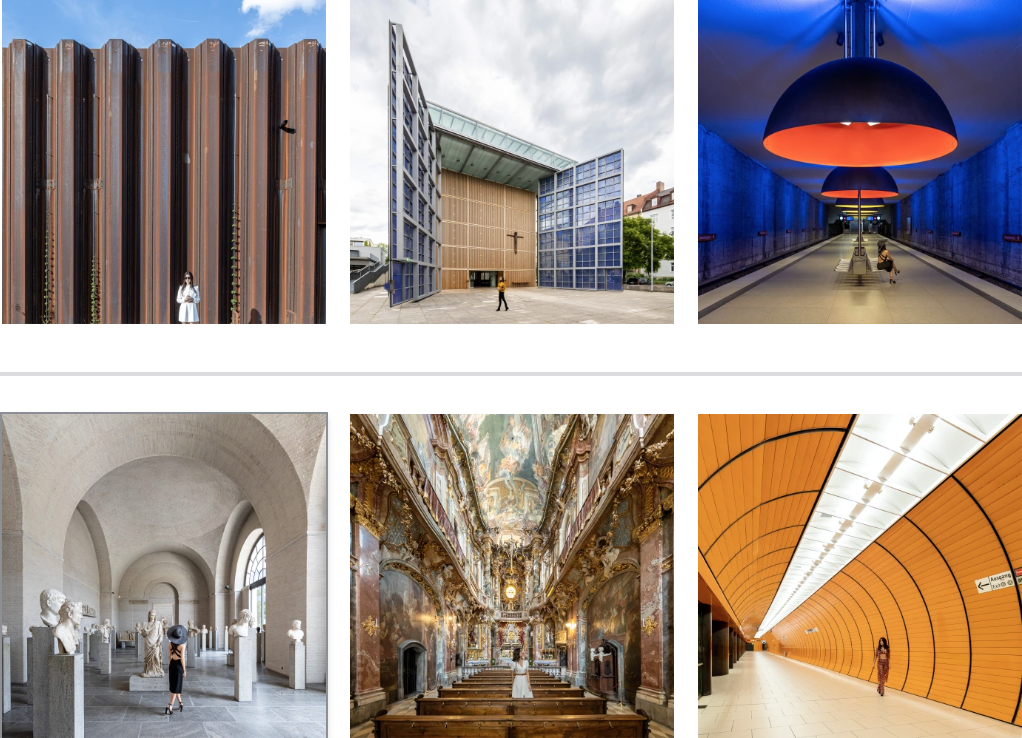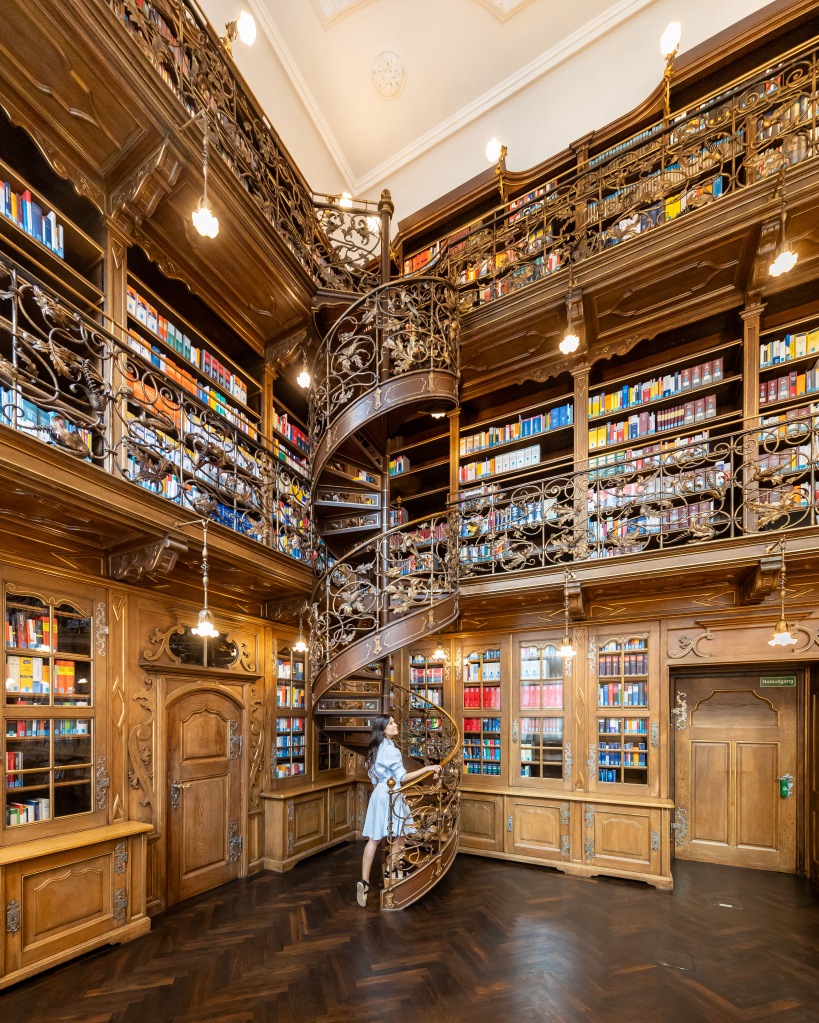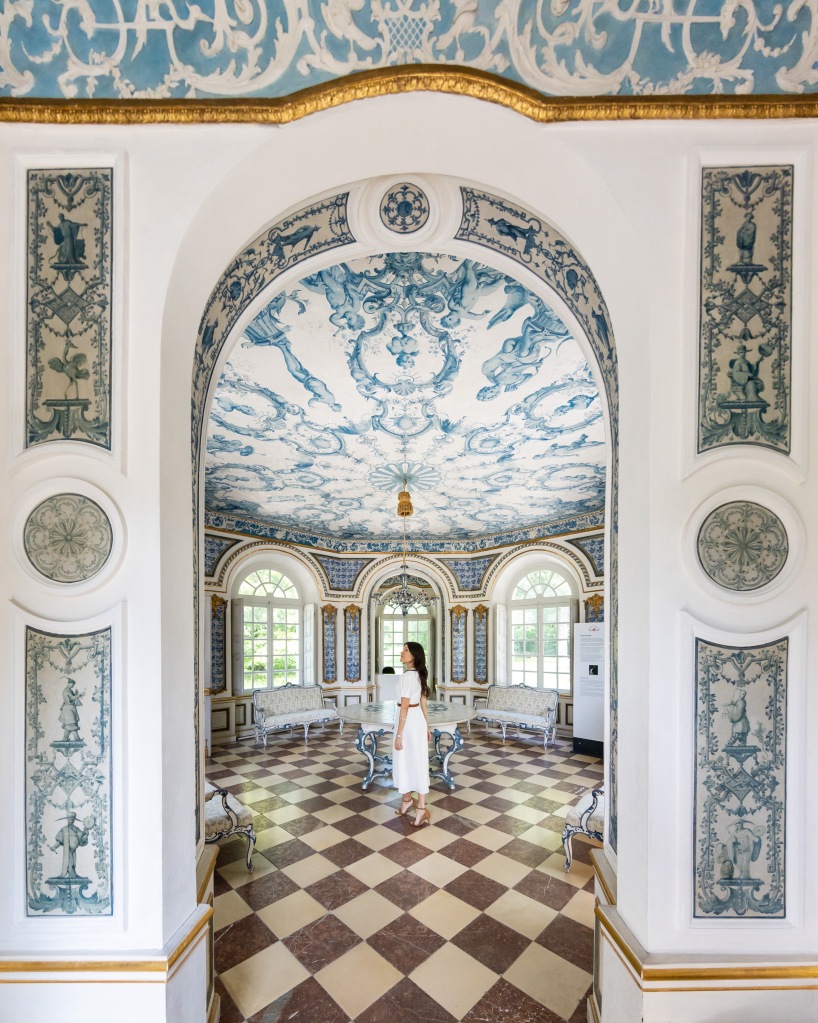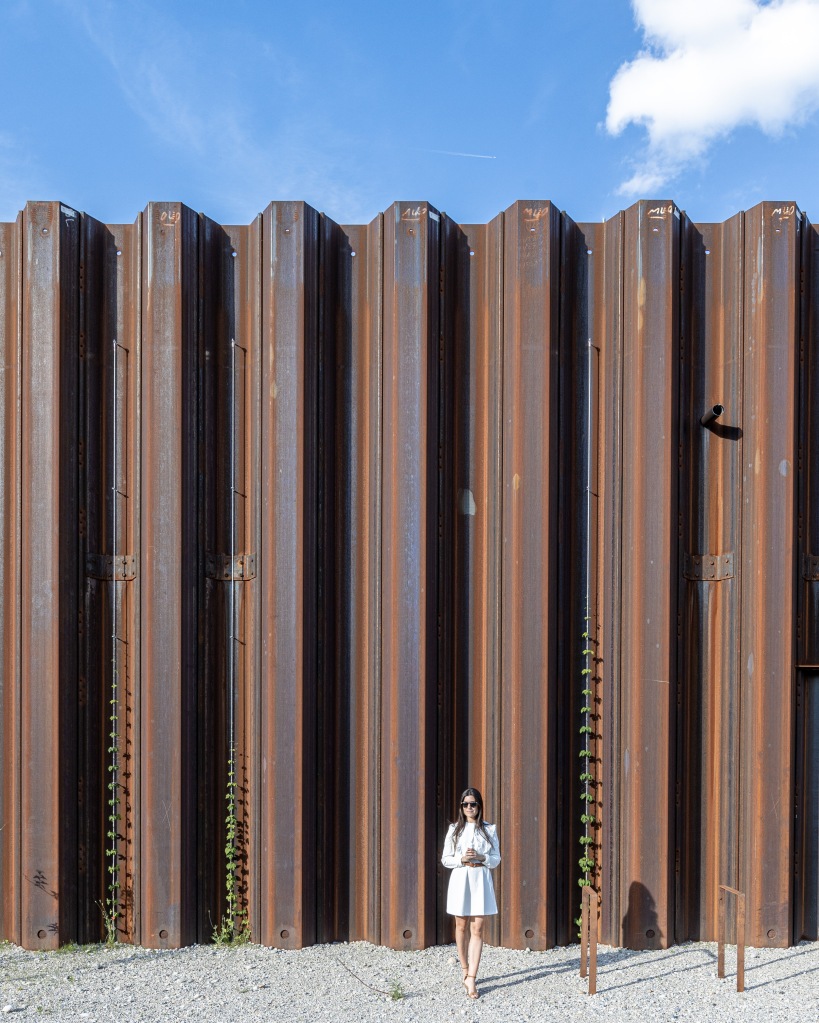Munich – Bavaria’s capital since 1506 – is a city with layers and layers of history. From its origins as a medieval city to its development into a modern metropolis, each era has left its mark, creating a fascinating amalgamation of architectural styles. From Middle Age churches and cathedrals to contemporary synagogues. From skyscrapers to small pavilions. Brutalism to Art Nouveau. Munich’s architecture is truly extensive and marvellous.
Last year, my friend and photographer Philipp Heer and I explored Munich. germany.travel and Simply Munich had invited us to spend a couple of days exploring and capturing the city from its many angles, and thanks to the brilliant planning of the team (Danke schön Frauke!) and a car, we managed to cover a great deal of locations.

Whether your taste leans towards contemporary churches, Baroque masterpieces, or sleek urban enclaves, Munich offers a plethora of options to suit every preference. So, prepare to immerse yourself in the breathtaking architectural wonders of this thriving city, and discover why Munich is truly a treasure trove for architecture enthusiasts.
I hope this list serves as a teaser for your future travels. Please find the map containing all locations at the end of this article.
1. Marienplatz Station

Something is mesmerising about Marienplatz Station: its 60’s vibes, vibrant orange hues and soft lights. Marienplatz stands out as the most bustling subterranean station within Munich, boasting significant architectural enhancements implemented between 2011 and 2015. During this period, comprehensive renovations were executed, encompassing the installation of new flooring, ceilings, and wall coverings. The lighting scheme underwent a substantial transformation, embracing modern LED technology and collaborating with renowned lighting designer Ingo Maurer to infuse the space with renewed luminosity and character. The objective was to imbue the underground environment with a sense of brightness, warmth, and spatial clarity, a goal splendidly achieved. Read more here.
Architect: Alexander von Branca
Location: Marienplatz, 80331 München (Google)
Year: 2011
2. Asamkirche

No architect should miss Asamkirche, a Baroque church that was built for private use. Two brothers – Egid Quirin Asam and Cosmas Damian Asam – designed this church in a small plot of land of just 22×8 metres. The church was not commissioned, but built as a private chapel for the greater glory of God and the salvation of the builders. This also allowed the Asam brothers to build in line with their ideas as independent contractors. For example, Egid Quirin Asam could see the altar through a window of his private house next to the church (Asamhaus). The Baroque façade is integrated into the houses of the Sendlingerstraße and swings slightly convex outward. Even more astonishing is the artistry of the two builders, who were able to harmoniously unite in the two-story space architecture, painting, and sculpture. Read more here.
Architect: Sculptor Egid Quirin Asam and painter Cosmas Damian Asam
Location: Sendlinger Str. 32, 80331 München (Google)
Year: 1746
3. Glyptothek

The poetic Glyptothek is another must-see in the Kunstareal, Munich’s gallery and museum quarter. The building, commissioned by the crown prince (later king) Ludwig of Bavaria and designed in the Neoclassical style by Leo von Klenze, was erected in 1830. Most of the core collection was acquired by Ludwig. It comprises Greek sculptures from the Archaic, Classical, and Hellenistic periods as well as Roman sculptures from the Imperial era. Notable pieces include the Barberini Faun (c. 220 BCE) and the pediment sculptures (c. 500 BCE) from the Temple of Aphaia in Aegina, Greece. The Glyptothek was damaged during World War II, but it was restored and reopened in 1972. It again underwent extensive renovations between 2018 and 2021. Read more here.
Architect: Leo von Klenze
Location: Königsplatz 3, 80333 München (Google)
Year: 1830
4. Library at the Neues Rathaus (Juristische Bibliothek)

Of all Munich’s sites, no other represents the city’s spirit like the Neues Rathaus. Located at the very heart of Marienplatz, it has become one of the most famous buildings in Munich. But you will have to go inside to find the true gem of the complex: The Juristische Bibliothek by Georg von Hauberrisser. Hidden away in the New Town Hall, the Legal Library is one of the most stunning libraries in the world, and one of Munich’s best kept secrets. The Juristische Bibliothek is a beautiful art nouveau library decked out with wrought-iron spiral staircases and multiple stories of colourful books popping from the shelves – a delight to visit. It’s open to the public, but not really for sightseeing. If you want to come read or explore the collections, standard Munich library rules apply (leaving your stuff in lockers outside), but if you want to come for photos and sightseeing, you must do so through a guided tour of the Rathaus. Read more here.
Architect: Georg von Hauberrisser
Location: Marienplatz 8, 80331 München (Google)
Year: 1906
5. Endless Staircase

Hidden in the courtyard of an office building in Schwanthalerhöhe, you will find a unique sculpture by Olafur Eliasson. The endless staircase is called Umschreibung which is the German word for ‘circumscription’ or ‘periphrasis’. The sculpture was finished in 2004 inside the headquarters of the KPMG trust. According to the artist, it is supposed to create ‘movement without destination, a space defined by motion rather than walls’. There are no opening hours – it’s a freely accessible courtyard. Read more here.
Architect: Olafur Eliasson
Location: Ganghoferstraße 29A, 80339 München (Google)
Year: 2004
6. Pagodenburg

The Pagodenburg is a prime example of eighteenth-century chinoiserie which was very much in vogue at the time. This small structure was built between 1716 and 1719 by Joseph Effner to a commission from Elector Max Emanuel. Sited north of the main canal, it respects the original plan of the park. To the south of the little palace lies a garden parterre, and to the north a green where the ‘Mailspiel’, a game similar to golf, was played. On the ground floor the colours blue and white predominate which, together with the exotic elements of the partly ornamental, partly figural ceiling painting and the Dutch tiles, allude to China and porcelain production. The upper floor accommodates very small but cleverly designed rooms. The Chinese Drawing Room with Chinese wallpaper and black-grounded lacquer painting looks exotic thanks to its colour scheme. The Chinese Cabinet , by contrast, has red-based lacquerwork. Despite its European Regency-style decoration, the Boudoir also has an exotic air on account of its bizarre shape. The rooms were furnished by Johann Anton Gumpp and Johann Adam Pichler. Read more here.
Architect: Joseph Effner
Location: Schloß Nymphenburg 1, 80638 München (Google)
Year: 1719
7. Westfriedhof U-Bahn Station

Possibly the most dramatic of Munich’s U-Bahn network of underground railways, Westfriedhof looks more like a surreal painting of Magritte than a station. The Munich U-Bahn started running in 1971, and Rolf Schirmer (a member of the subway planning council) wrote that the designs are meant to ‘make a passenger’s wait more pleasant, something that cannot generally be said of subterranean, mostly artificially lit, spaces.’ The lighting concept was created by the designer Ingo Maurer, who also provided the lighting at the Münchner Freiheit train station, among other structures. There are 11 lamps at this station, which measure about 3.6 metres (12 feet) in diameter. They divide the platform with swaths of blue, red and yellow light. Other stunning stations you shouldn’t miss include Marienplatz Station by Alexander von Branca, Dülferstraße by Ricarda Dietz and Candidplatz by Sabine Koschier. Read more here.
Architect: Westfriedhof by Ingo Maurer
Location: 80992 Munich (Google)
Year: 1998
8. Herz-Jesu-Kirche

Herz Jesu Kirche (Church of the Sacred Heart) in Munich is one of several contemporary churches that were built in Germany to mark the turn of the millennium. Over the past 15-plus years, this church has become one of the city’s landmarks and a globally recognised icon of ecclesiastical architecture. The boundaries between interior and exterior are not definitively prescribed, but rather chosen in response to the situation at hand. The church presents itself as a box inside a box– the interior box clad in vertical maple louvers and the exterior box encased in glass. Nevertheless, the real special feature is the front, which is entirely opened hydraulically. The portal measures 14 metres (46 feet) high, 18 metres (59 feet) wide, and weighs 50 tons, making it among the largest in the world. Read more here.
Architect: Allmann Sattler Wappner
Location: Lachnerstraße 8, 80639 München (Google)
Year: 2000
9. Heavy Riders Theatre

In the creative quarter of Munich – a transitional area on the site of the previous Luitpold barracks – a new cultural building of a special type has arisen. The architect firm Mahlknecht Herrle created an original, temporary events location for dance, theatre and music that attracts attention with its extremely striking facade in classic sheet piling. The new building replaces the previous venue for three free cultural institutions that was in severe need of renovation. For the artistic cooperation, a building was needed that could be implemented in the shortest possible time and easily taken down again after its period of use. The sheet piling used, which is normally set into the ground to secure building excavations, can simply be taken out again and transported to a new location to be reused when the building is dismantled. Its raw, untreated, rusty iron surface with the typical corrugated, building-site look is ideally suited to the provisional character of the creative quarter, which is characterised by workshops and studios, alternative art and lots of individual initiatives of local promoters of culture. Read more here.
Architect: Mahlknecht Herrle
Location: Dachauer Str. 114, 80636 München (Google)
Year: 2021
10. Müller’sches Volksbad (Hallenbad)

The Müllersches Volksbad was completed in 1901. At the time of its completion, the Neo-Baroque Art Nouveau building was the largest and most expensive swimming pool in the world – and the city’s first public indoor pool. The construction goes back to a donation by engineer Karl Müller to the city of Munich, combined with the requirement to build a bath for the ‘poor people’. With its architecture and interior design, the bath became one of the most beautiful bathhouses in Europe. Carl Hocheder took inspiration in the design of a variety of models: Roman thermal baths as well as sacred buildings, hammams and mosques, all held together by contemporary Art Nouveau elements. The rich Baroque decorations inside include wide staircases leading down into the pools, murals with marine motifs, stucco work, a bronze statue in the main pool, ornate iron railings and wooden parapets, as well as intricately designed clocks. Read more here.
Architect: Carl Hocheder
Location: Rosenheimer Str. 1, 81667 München (Google)
Year: 1901
Check these and other amazing locations on the map below or download my free Munich Architecture Guide (PDF):
Pingback: The Free Architecture Guide of Munich (PDF) | Virginia Duran
Pingback: 23 Spots You Shouldn’t Miss in Munich If You Love Architecture | Virginia Duran
Love number 2 & 5! ❤️
LikeLiked by 1 person
Ohh those are great! Any reason why you liked them?
LikeLike
#2 – I love the colour palette and although it has many details it conveys a sense of peace, it’s like I can see it through your eyes, over there in the middle. Also, I enjoyed very much reading the story behind!
#5 – I really like the harmonious movement and the contrast of black & ochre. It caught my attention immediately and then I read the description and understood why – I’m a huge fan of Olafur Eliasson and of the hidden secrets you always find in the cities!
LikeLiked by 1 person
What great choices and explanations! Thanks for stopping by and contributing through your comments 🙂
LikeLike